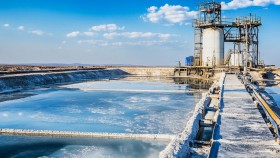How ice age carbon hid in the deep Atlantic
A huge reservoir of carbon developed in the deep Atlantic Ocean during the last ice age, research led by ANU Research School of Earth Sciences has found.
Lead researcher Dr Jimin Yu found that as ocean currents changed over 10,000 years, an extra 50 gigatonnes of carbon was stored at the bottom of the Atlantic Ocean.
"It was a major climate transition period for the Earth," said Dr Yu.
"Within 10,000 years the sea level dropped 60 metres, and the atmosphere lost 60 gigatonnes of carbon, equivalent to a drop of about 30 parts per million of carbon dioxide. This research helps us understand the fate and the impact of that carbon."
The research will help scientists better understand the complex interactions between the atmosphere and the ocean that may occur with the current rise in atmospheric carbon dioxide levels, which is causing global warming.
In the past 150 years, atmospheric carbon dioxide has risen from below 300 parts per million to 400 parts per million.
"To improve our understanding of climate change in the future we must look at what processes controlled changes in the past," said Dr Yu.
The research team from ANU, University of New South Wales, Chinese Academy of Sciences, and several other partner institutions studied the chemical makeup in fossils of tiny animals called benthic foraminifera that live in the deepest parts of the Atlantic Ocean.
During the slide into an ice age about 70,000 years ago, the ratio of boron to calcium in the fossils decreased, reflecting an increase in the amount of carbon dioxide in the ocean more than three kilometres under the surface.
The team found that this change in carbon dioxide matched closely with changes in the ocean circulation, which caused a large body of carbon-laden water in the southern Atlantic to spread northward and upward.
"The deep ocean water originating from the South Atlantic stayed at the bottom of the ocean for hundreds of years accumulating carbon from the dead plankton sinking from the surface," said Dr Yu.
The research is published in Nature Geoscience.










